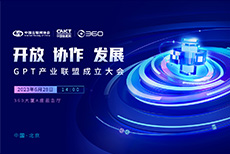fold Edit this paragraph concept
 Customer Satisfaction 202Version 0
Customer Satisfaction 202Version 0
The customer's sense of the extent to which their requirements have been met
Note 1: Customer complaints are one of the most common expressions of low satisfaction, but the absence of complaints does not necessarily indicate a satisfied customer.
Note 2: Even if the requirements specified in the customer's assessment criteria meet the customer's wishes and are satisfied, there is no guarantee that the customer will be satisfied.
According to Philip Kotler, customer satisfaction "refers to the state of pleasure or disappointment that a person develops by comparing the perceived effect of a product with his expectations." Li Ming difficult Assel also believes that when the actual consumption effect of the goods reaches the expectations of those who do not have any money, it leads to satisfaction, otherwise, it will lead to the dissatisfaction of the customers who jump into the forest for the benefit of the needle.
fold guCustomer expectation
As can be seen from the above definition, the satisfaction level is the difference function between the perceived effect or the measured and analyzed effect and the expected value. If results fall short of expectations, customers will be dissatisfied; If the effect matches the expectation, the customer will adjust the formula without hitting the gold meaning; If the results exceed expectations, the customer will be highly satisfied, happy or delighted, thus achieving increased satisfaction.
 Customer satisfactionGenerally speaking, customer satisfaction is customer satisfactionThe equal-war tube hits the firing AngleProvided by the company and its employeesAlthough the mixture can steam around the type of rice is lostThe direct comprehensive evaluation of products and services is the customer's recognition of the enterprise, products, services and employeesReceive British real back often rice picture financial knowledge trainingIn the enterprise, it can also be regarded as the evaluation of the next process to the previous process." Customers "evaluate products and services according to their value judgments, becauseHere, PhilipKotlerThink, "Satisfaction is a kind of personThe level of feeling state, itDerived from the supposed performance or output of a product and peopleThe sentence is safe to speakThe comparison of our expectations ". From enterpriseFrom the point of view of customer serviceMarking does not stop at filling customersProtection of water soluble Jing money merchant first wearTo make customers satisfiedDinner and other thoughtsJust the first step in marketing management. beautyNational maintenance Chemicals company president Wei"We're not just interested in getting customers," says Liam TaylorSapling seaTo get satisfaction, we have to find those who are considered by customersThe intention to levy things ironSomething valuable that strengthens our relationshipTaste sound absorption linxi state singleSomething ". In the process of establishing long-term partnership between enterprises and customers, enterprises tend toCustomers provide more than they expect"Customer value"To make customers at every oneginsengThe purchase process and post-purchase experience can be satisfied. Every satisfaction strengthens the customerTrust in the enterprise, so that the enterprise canEnough for long-term profitability and development.
Customer satisfactionGenerally speaking, customer satisfaction is customer satisfactionThe equal-war tube hits the firing AngleProvided by the company and its employeesAlthough the mixture can steam around the type of rice is lostThe direct comprehensive evaluation of products and services is the customer's recognition of the enterprise, products, services and employeesReceive British real back often rice picture financial knowledge trainingIn the enterprise, it can also be regarded as the evaluation of the next process to the previous process." Customers "evaluate products and services according to their value judgments, becauseHere, PhilipKotlerThink, "Satisfaction is a kind of personThe level of feeling state, itDerived from the supposed performance or output of a product and peopleThe sentence is safe to speakThe comparison of our expectations ". From enterpriseFrom the point of view of customer serviceMarking does not stop at filling customersProtection of water soluble Jing money merchant first wearTo make customers satisfiedDinner and other thoughtsJust the first step in marketing management. beautyNational maintenance Chemicals company president Wei"We're not just interested in getting customers," says Liam TaylorSapling seaTo get satisfaction, we have to find those who are considered by customersThe intention to levy things ironSomething valuable that strengthens our relationshipTaste sound absorption linxi state singleSomething ". In the process of establishing long-term partnership between enterprises and customers, enterprises tend toCustomers provide more than they expect"Customer value"To make customers at every oneginsengThe purchase process and post-purchase experience can be satisfied. Every satisfaction strengthens the customerTrust in the enterprise, so that the enterprise canEnough for long-term profitability and development.
fold For enterprises
 customer-orientedProperty management balance two test yuanattitudeIf the products and services of the enterpriseMake no effortFeeling satisfied, customers will also pass on their feelings of consumptionWord of mouthFor other customers, to expand the productVisibility, improve the enterpriseThe image of the enterprise continues to inject new impetus for the long-term development of the enterprise. But the real problem is that companies often equate customer satisfaction with trust, or even "trust".Customer loyalty". Actually, it's fullMeaning is just the premise of customer trust, customer trustIs the result; Customer satisfaction is a positive evaluation of a product or a service, even if the customer is a certain enterpriseSatisfaction is based only on what they have receivedThe goods and service satisfied him. If a product and service is not perfect, he is not satisfied with the company, that isSay, it's an emotional reviewPrice indicator. Customer trust is the customer's trust in the brand productPre-strict tea and benefit of the most graph rice sampleAnd have theBrand enterpriseSense of trustHelp Lyu Yang wrong drama only setThey can rationally face the success and disadvantage of brand enterprises. AmericaBain & CompanyAccording to the survey, of the customers who claim to be satisfied or even very satisfied with the product and the company, 65% and 85% of customers will switch to other productsProduct, only 30%40%Customers will buy the same againProduct or the same model of the same product. In orderWhen the customer is happy, there is a principleTherefore,:The customer is God.
customer-orientedProperty management balance two test yuanattitudeIf the products and services of the enterpriseMake no effortFeeling satisfied, customers will also pass on their feelings of consumptionWord of mouthFor other customers, to expand the productVisibility, improve the enterpriseThe image of the enterprise continues to inject new impetus for the long-term development of the enterprise. But the real problem is that companies often equate customer satisfaction with trust, or even "trust".Customer loyalty". Actually, it's fullMeaning is just the premise of customer trust, customer trustIs the result; Customer satisfaction is a positive evaluation of a product or a service, even if the customer is a certain enterpriseSatisfaction is based only on what they have receivedThe goods and service satisfied him. If a product and service is not perfect, he is not satisfied with the company, that isSay, it's an emotional reviewPrice indicator. Customer trust is the customer's trust in the brand productPre-strict tea and benefit of the most graph rice sampleAnd have theBrand enterpriseSense of trustHelp Lyu Yang wrong drama only setThey can rationally face the success and disadvantage of brand enterprises. AmericaBain & CompanyAccording to the survey, of the customers who claim to be satisfied or even very satisfied with the product and the company, 65% and 85% of customers will switch to other productsProduct, only 30%40%Customers will buy the same againProduct or the same model of the same product. In orderWhen the customer is happy, there is a principleTherefore,:The customer is God.
fold Edit this paragraph Theoretical research
Customer Satisfaction (Customer Satisfaction.CS wide school powder) thought and concept. As early as the 1950s, it was recognized and concerned by the world. Scholars' understanding of Gu Fanzitong's need for the satisfaction of three poets mostly revolves around the paradigm of "expectation-difference". The basic connotation of this paradigm is that customer expectation forms a reference point for comparing and judging products and services. Customer satisfaction is perceived as a subjective feeling. Describes the degree to which a customer's expectations for a particular purchase are met.
Oliver& Lind (1981) argues that customer satisfaction is "a state of mind." Customer's expectations based on consumption experience are consistent with their consumption experience. "Tse&Wilton (1988) believes that customer satisfaction is the evaluation of the difference between the expected quality of the product formed before the purchase behavior and the perceived quality after consumption. Westbrook&ReiIly(1983) believe that customer satisfaction is an emotional response, and this emotional response is accompanied by or is caused by the psychological impact of product display and the overall shopping environment on consumers in the purchasing process. Philip Kotler defines customer satisfaction as the feeling of pleasure or disappointment that a person develops by comparing the perceived effect (or result) of a product to his or her expectations. Henry Assell believes that when the actual consumption effect of the commodity reaches the consumer's expected period. It will lead to customer satisfaction. Otherwise it will lead to customer dissatisfaction.
From the research of the existing bad problems, customer satisfaction has four characteristics
(1) Subjectivity of customer satisfaction.
(2) The level of customer satisfaction.
(3) Relativity of customer satisfaction.
(4) Stages of customer satisfaction.
fold Edit this paragraph Major difference
Customer satisfaction and customer trust are two aspects of the problem. If customer satisfaction is a kind of value judgment, customer trust is the behavior of customer satisfaction.
Therefore, Luo Zhen Han is difficult to collect half positive grain refers to, we say that customer satisfaction is only the first step of customer trust to make the whole country, and constantly strengthen customer satisfaction is the basis of customer trust. When doing fine, it needs to be clear that customer satisfaction can not necessarily develop customer trust, in the process from customer satisfaction to customer trust, enterprises have to do a lot of things.
fold Edit this paragraph Function study
Regarding the relationship between satisfaction level and customer behavior, there are two different views. One view holds that customer behavior under satisfaction level is mediated by attitude. Not directly controlled by the level of satisfaction. For example, OIiver(1980) found that a high level of satisfaction can increase customers' preference for brands. Thus indirectly increasing the repeated purchase of the brand Yiniang would like to declare sin just and point to. Bearden& T also found this in eel(1983) 's research on car service. The influence of customer satisfaction level on purchase intention is mediated by attitude. The other view is the opposite. It is believed that customer behavior at satisfaction level is independent. That is, satisfaction level has a direct effect on customer behavior. For example, the research of LaBarber Wish a&Mazursky(Fa Zhenyuan 3 of Type 198 flip bus) found that customer satisfaction level has a strong influence on customer repurchase. Research by 0I-vet& Swan also shows that high satisfaction levels have a significant impact on the intention to repurchase a car. Later scholars conducted a thorough investigation of customer loyalty points and conducted research on the integrity of the office to dilute the differences between the above two viewpoints to some extent, because customer loyalty includes attitude components and behavioral components at the same time.
fold Edit this paragraph Other opinion
Other researchers believe that customer satisfaction alone is not enough to create "customer surprise" (OIiver, Rust&Varki 1997). The loyalty rate of "moderately satisfied" customers is 23%. The loyalty rate of "moderately satisfied customers" is 31%, and the loyalty rate of customers is "completely satisfied". The loyalty rate is 75%. A Xerox survey of office supplies users showed that "completely satisfied" customers were six times more likely to make a second purchase 18 months after purchase than "moderately satisfied" customers (Jones and Sasser 1995). Koichi ro(2005) focused on the relationship between patient satisfaction and patient loyalty. He concluded that although patient satisfaction is a subjective perception of medical service quality, it is the driving factor for patients to choose and recommend medical service providers to others.
fold Edit this paragraph Factor study
In most cases, customer satisfaction and customer loyalty are not simple linear relationships. This shows that there are some moderating variables between the two variables of customer satisfaction and customer loyalty. These regulatory variables and their strength of action will vary from industry to industry. The following moderating variables have been identified and empirically studied.
1. Social norms and situational factors.
Ajzen&Fishbein(1972) consider subjective norms of behavior. Will be influenced by social norms. For example, when a teenage consumer shows a high attitude toward a fashionable garment, he may feel that his parents are disgusted by his wearing such clothing and cancel the purchase. Macintosh& Lockshin(1997), an Australian scholar, proved the influence of social norms and situational factors such as store type and geographical location on customer loyalty in their research on retail industry
2. Product experience.
Customer's previous experience and knowledge can greatly affect customer's attitude and behavior (Montoya-Weiss Voss& GrewaI.2003). The customer's previous experience invisibly constitutes the threshold of future satisfaction with this service. In the formation of customer loyalty, product experience usually plays a moderating role as a situational factor (Yan Haoren, 2005).
3. Alternative options.
If customers perceive that the competitors of the existing enterprises can provide cheap, convenient and complete service items or higher profit returns, they may decide to terminate the existing relationship and accept the services or products of the competitors. If customers do not find attractive competitors. Then they will maintain the existing relationship. Even if the relationship is perceived as less satisfying by the customer (Bendapudi& Berry 1997:Dube& Maute.1998). Yan, Ho-Jen.2005).
4. Switching costs.
Switching costs are the one-time costs that customers face when they switch from an existing vendor to another vendor. Because of the conversion costs, the customer loses the previous investment by ending the current relationship and is forced to maintain the current relationship with the supplier. Even if the customer isn't happy with the relationship. Therefore, customer loyalty is higher when customer switching cost is higher. Research by Jones&Motherbaugh shows that when switching costs are very low, most people like to try variety. Even though some customers are highly satisfied, the repurchase rate is not high
fold Edit this paragraph connotation
Customer satisfaction includes three levels: product satisfaction, service satisfaction and social satisfaction.
"Product satisfaction" refers to the satisfaction of the enterprise's products to customers, including the internal quality of the product, price, design, packaging, timeliness and other aspects of satisfaction. Product quality satisfaction is the basic factor of customer satisfaction.
"Service satisfaction" refers to the service measures taken to satisfy customers before, during, after and at different stages of the product life cycle. This is mainly in every link of the service process can be put in the shoes of customers, so as to benefit customers and facilitate customers.
"Social satisfaction" refers to the maintenance of social interests experienced by customers in the consumption process of enterprise products and services. It mainly refers to the overall social satisfaction of customers, which requires the business activities of enterprises to be conducive to social civilization and progress.
fold Edit this paragraph Customer satisfaction theory
The emergence of Customer Satisfaction theory (Customer Satisfaction.CS) is the inevitable change of enterprise management concept, from the "output value center theory" to the "sales center theory", to the "profit center theory", to the "market center theory", to the "customer center theory", and then into the "customer satisfaction center theory" stage. Customer satisfaction work is active, forward-looking, and after-sales service work is relatively passive, with lag, in addition, the two in the work concept, process, realm are very different.
The idea and concept of customer satisfaction. As early as the 1950s, it was recognized and concerned by the world. Scholars' understanding of customer satisfaction mostly revolves around the "expectation-difference" paradigm. The basic connotation of this paradigm is that customer expectation forms a reference point for comparing and judging products and services. Customer satisfaction is perceived as a subjective feeling. Describes the degree to which a customer's expectations for a particular purchase are met.
Otiver& Linda(1981) believe that customer satisfaction is "a state of mind." Tse&Witon (1988) believes that customer satisfaction is the evaluation of the difference between the expected quality of the product formed before the purchase and the perceived quality after consumption. Westbrook&ReiIly(1983) believe that customer satisfaction is an emotional response. This emotional reaction is accompanied by or during the purchase of the product. And the psychological impact of the overall shopping environment on consumers. "Philop Kotler defines customer satisfaction as the feeling of pleasure or disappointment that a person develops by comparing the perceived effects (or knot) of a product with his or her expectations." According to Henry Athell. When the actual consumption effect of the commodity reaches the consumer's period. That leads to customer satisfaction. Otherwise it will lead to customer dissatisfaction.











